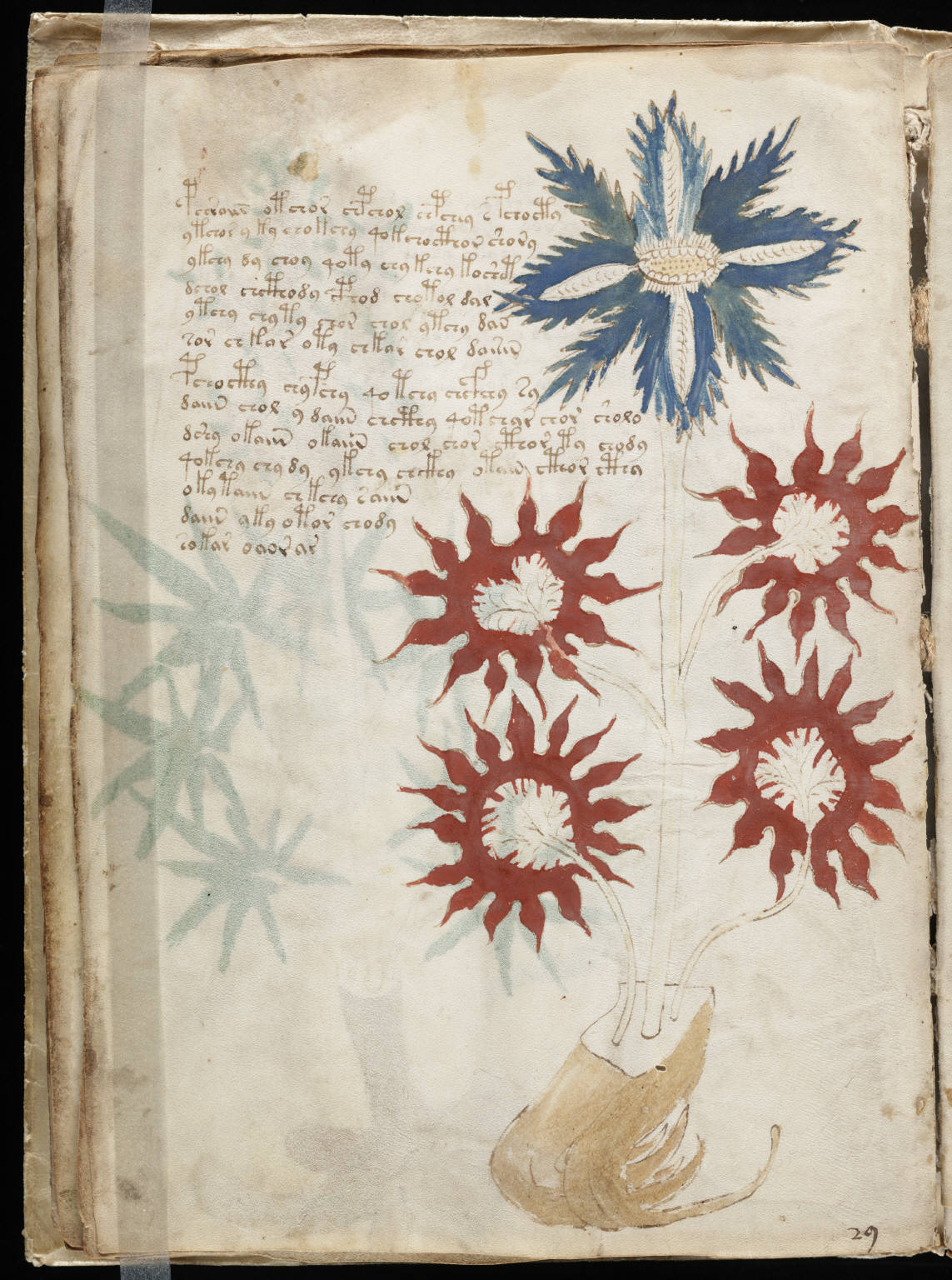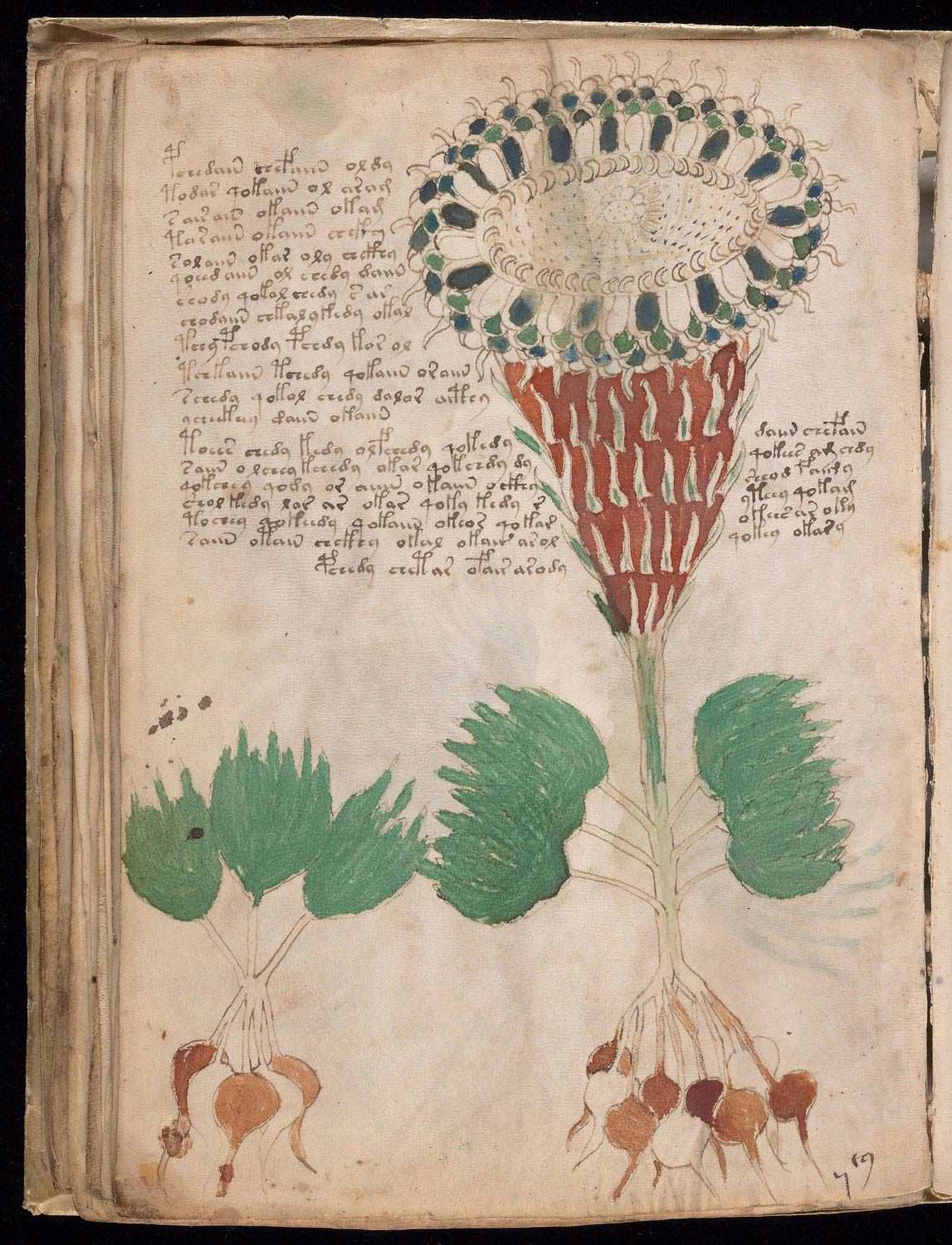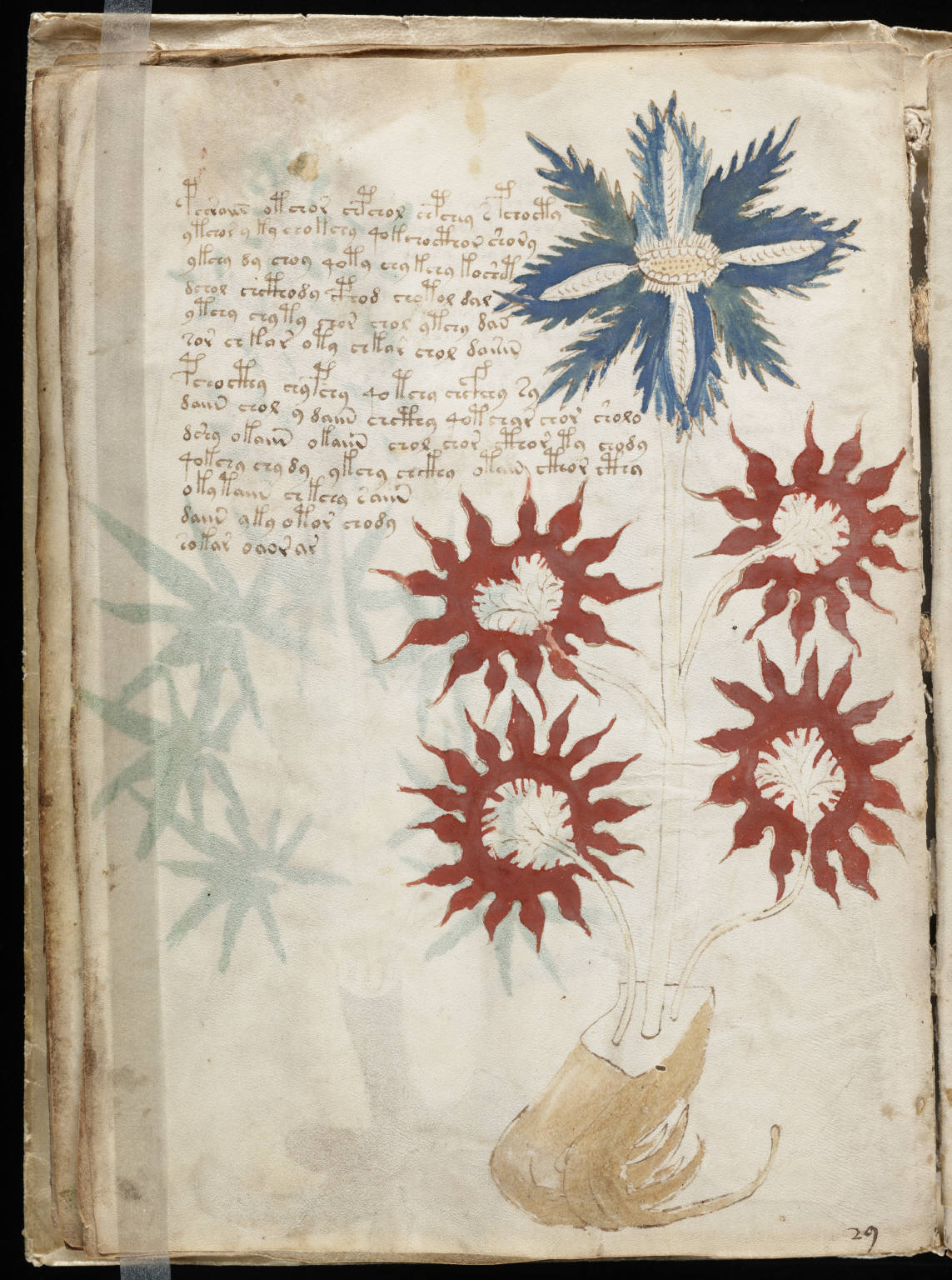In the vast realm of historical mysteries, few artifacts have captivated scholars and enthusiasts quite like the Voynich Manuscript. This enigmatic book, dating back to the early 15th century, has defied every attempt at understanding its contents, earning it the reputation of being the world’s most mysterious manuscript.
The World’s Most Puzzling Manuscript
Imagine a book written in an unknown script, filled with bizarre illustrations of unidentifiable plants, naked women, and cryptic astronomical diagrams. This is the Voynich Manuscript, a 240-page codex that has baffled cryptographers, linguists, and historians for over six centuries. Carbon-dated between 1404 and 1438, the manuscript is believed to have originated in Italy during the Renaissance, but its true purpose remains shrouded in mystery.

The mysterious Voynich Manuscript, showing its unique script and illustrations. Credit: Wikipedia
The manuscript is written in a unique script dubbed ‘Voynichese,’ which follows linguistic patterns that seem both familiar and completely alien. Experts have noted that while the text appears to have a structured language-like quality, no one has been able to definitively translate a single word. Its pages are adorned with illustrations that defy conventional understanding – botanical drawings of plants that do not exist, astronomical charts that do not match any known celestial system, and illustrations of nude women in elaborate settings.
A Medieval Mystery Unveiled
Scientific analysis has revealed fascinating details about the manuscript’s physical composition. Created on vellum made from at least fourteen to fifteen entire calfskins, the manuscript was crafted with surprising care. Multispectral imaging techniques have uncovered hidden layers of text and provided tantalizing glimpses into its potential secrets.

Mysterious botanical illustrations from the Voynich manuscript. Credit: Britannica
The manuscript is divided into six distinct sections: herbal, astronomical, balneological, cosmological, pharmaceutical, and a section with recipe-like text. Each section is characterized by unique illustrations that have only deepened the mystery. Botanical drawings show plants with roots from one species attached to leaves of another, creating impossible botanical chimeras that challenge our understanding of medieval scientific illustration.
[Rest of the content remains the same…]
References:
Wikipedia – Voynich Manuscript – link
Britannica – Voynich Manuscript – link
Voynich.nu – Analysis of the illustrations – link
Categories: Ancient Manuscripts, Cryptography, Historical Mysteries, Medieval History, Unsolved Mysteries, Unsolved Mysteries
Tags: Ancient Books, Ancient Codes, Cryptography, Historical Enigma, Medieval Manuscripts, Medieval Mystery, unsolved mysteries, Voynich Manuscript
Religion: Unknown
Country of Origin: Italy, World
Topic: Historical Mystery
Ethnicity: unknown


